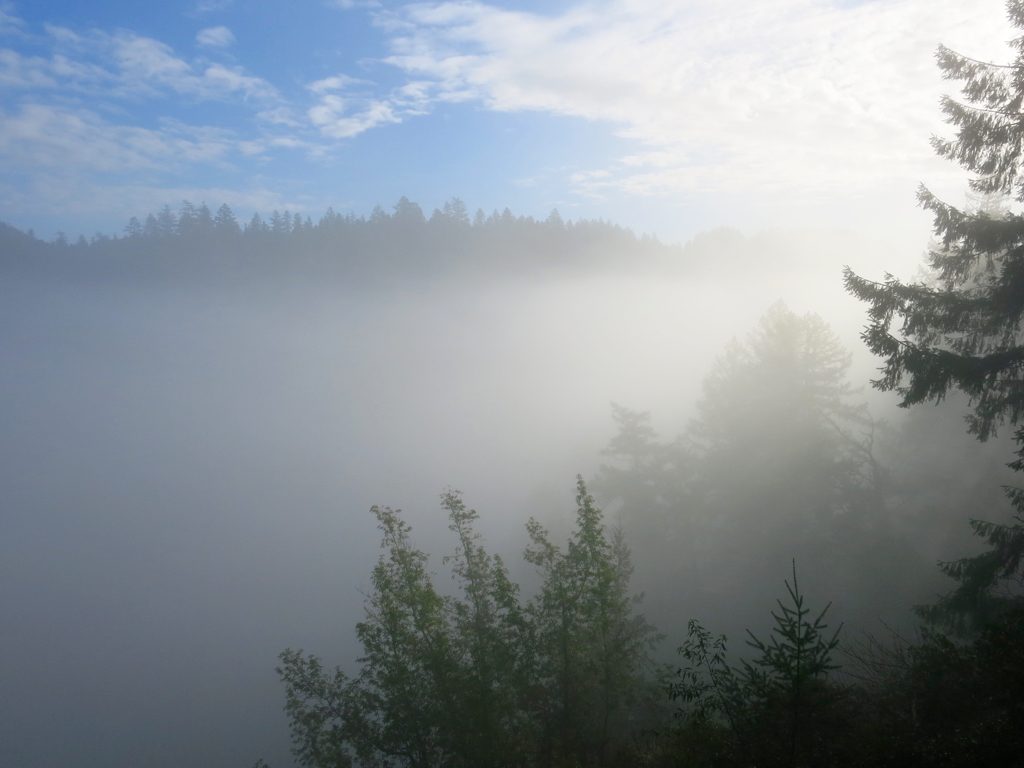On Thursday, I was at a meeting in Camp Meeker, California, in the redwoods. In the morning, I walked out the door just in time to look out at the top of the fog bank in the valley below.

As in a traditional Chinese landscape painting, by anyone from Wang Wei down to the Ming dynasty, you could tell how far away something was by how much it faded into the mist; and then above the mist you could see a distant hilltop covered with trees. I imposed a kind of Western-style perspective into the photograph by finding lines — in trees, in the horizon, in the clouds — that seem to lead to a vanishing point about where the sun is trying to break through the clouds. There was no perspectival vanishing point in the actual landscape: just mist and trees and abrupt hills and valleys. But so it is that we use our familiar conceptual schemas to experience the world, even when they don’t really fit.
